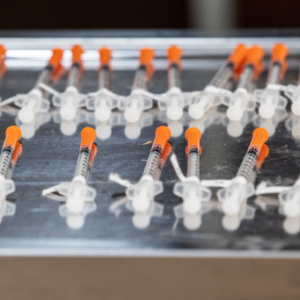Could you meet all the welfare needs of a rabbit?
Despite being the third most popular pet in the UK, rabbits are amongst the most misunderstood. They are curious, highly intelligent, social, and fun animals, making caring for them great fun and very rewarding. With the best care they can enjoy full and enriched lives, living as long as dogs and cats.
But rabbits have complex needs and it’s essential they have enough room to exercise, display normal rabbit behaviour and eat the right diet to stay healthy and happy.
Sadly, though too many live out their days confined to a hutch, unable to display the behaviours they would show in the wild. Often this is simply due to the lack of knowledge of new rabbit owners, with the level of advice given to in pet shops, at best, inadequate and at worst, non-existent.
How to keep happy rabbits
Happy rabbits have a lot of energy: they enjoy running around and playing. They’re also very social creatures, so spending time with their family members – human and rabbit – is essential to their well-being. Ideally, they should:
- Have a companion – rabbits are happiest when they are half of a bonded pair. If your rabbit is living alone, they could get lonely and bored. To be kept with others, rabbits must be neutered – castrated or spayed (recommend regardless).
- Have the right housing – rabbits need the space to be able to hop, stretch out fully, stand up on their hind legs and run around, so a hutch alone is not enough. Give them an environment to display their natural behaviours.
- Eat well – their digestive systems are complex and delicately balanced. Feed them unlimited good quality hay, along with fresh vegetables and quality pellets.
- Get mental and physical stimulation – rabbits benefit from a rotating collection of toys. They are also incredibly curious little things, so give them puzzles and things to investigate to help stave off boredom.
- Be neutered and vaccinated – take them to the vet for annual vaccinations, regular check-ups and if you have any concerns.
Home, Sweet Home
A rabbit’s environment has a direct impact on its health and happiness, with daily exercise vital to their mental and physical health. The big question you need to ask yourself is where will they live – indoors or outside? Both can work well providing the space they have is safe and most importantly big enough for then to display their natural energetic behaviours.
Unfortunately, many commercially produced hutches are simply not big enough for the rabbits they are housing, and lack of advice at the buying stage leaves new owners unaware. A good hutch should be:
- At least 6 ft wide x 2 ft deep x 2 ft high.
- Dry and free from mildew on the inside.
- Draught-free.
- Watertight.
- Sheltered at the front from direct sunlight or wind exposure.
As rabbits need at least several (ideally eight) hours of exercise a day a predator-proof run will need to be attached to the hutch. This should be:
- At least 4 ft wide x 8 ft long x 3 ft high.
- Made from sturdy mesh.
- Be on firm standing to prevent rabbits burrowing out or predators burrowing in.
- Provide shade and things to do.
- Have good air flow and light.
How often to clean out your rabbit will depend on how messy your rabbit is, but as a rule, we would advise cleaning out damp toilet areas every day and doing a full clean out at least once a week. Using litter trays with a wood-based cat litter under wood shavings is ideal as they are easy to empty, protect the hutch floor from the abrasive action of the urine and they train the rabbit to use the tray which increases hutch hygiene.
6 signs your rabbit is stressed or unhappy
Sometimes, it can be difficult to know what our rabbits are thinking. As prey animals, the way they behave is different to other common pets and changes to their body language can be subtle. If you know what to look for, it can help you to recognise if they are stressed or unhappy and help get them back to their usual self:
- Loss of appetite
- Lethargy
- Hiding
- Overgrooming
- Aggression
- Obsessive biting
A change in your rabbit’s behaviour can indicate many things e.g. living conditions, loneliness, environment or sickness, but luckily most of these things can easily be rectified with a few simple changes. It’s important to speak to your vet if you notice any unexplainable changes in your rabbits’ behaviour, so they can check if there’s any medical reasons for it.
Think carefully before you jump into buying a rabbit
Rabbits can be affectionate and quickly ingratiate themselves into your home life. Happy bunnies will hop, dance and binky their way into your hearts. But rabbits are not usually:
- Good pets for young children.
- Pleased to be picked up or petted.
- Able to live in small spaces.
- Happy living alone.
- Easy to look after.
Rabbits have complex needs and it’s important to make sure your rabbits have enough room to exercise, display normal rabbit behaviour and eat the right diet to keep healthy.





